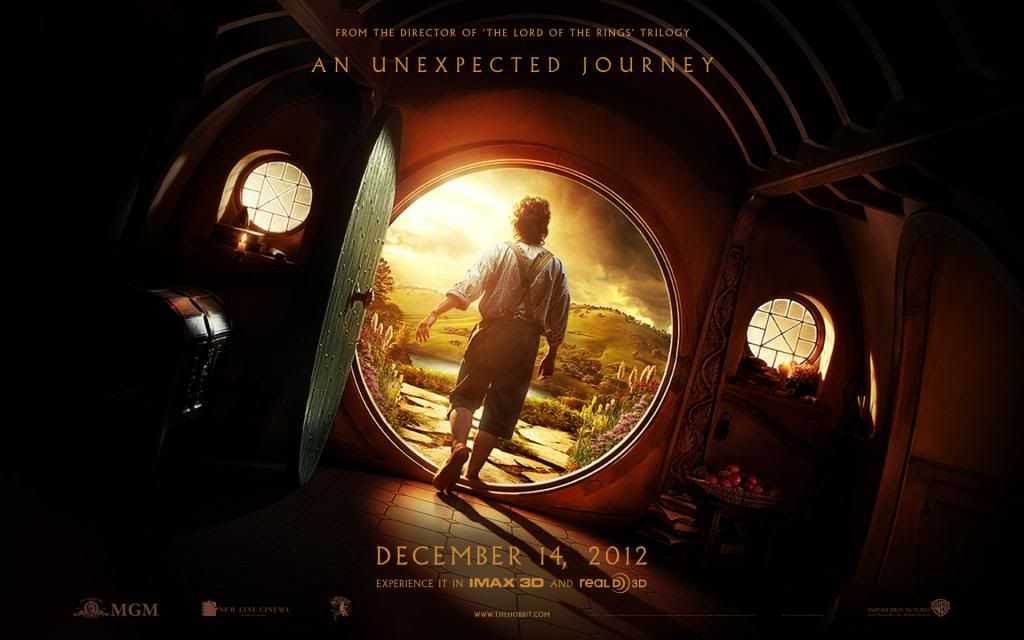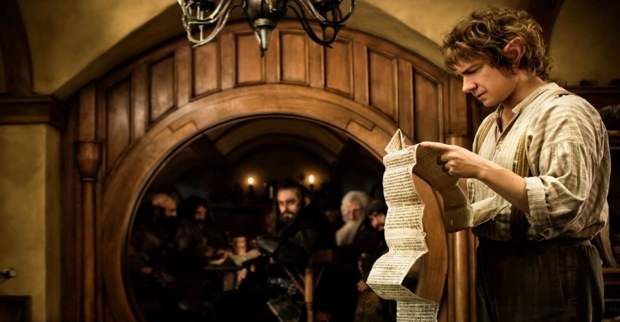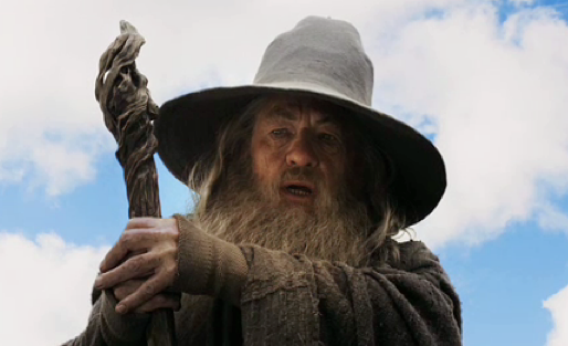The Hobbit, by J.R.R. Tolkien, is a far more filmable piece of work than his larger work, The Lord of the Rings. It has a more simple narrative, its plot is contained to one volume, and its themes remain focused on the character of Bilbo Baggins and how he deals with his adventures. Yet, according to interviews and as evidenced in works such as the Unfinished Tales and the Silmarillion, Tolkien knew there was more going on than a hobbit coming out of his hole, and the intent was to embellish this work. Director Peter Jackson has taken it upon himself to do just that, adapting the story into three films, the first of which is sub-titled An Unexpected Journey.

Bilbo Baggins is a hobbit. He is concerned with remaining a respected member of his community and not inviting any sort of trouble to his doorstep. Unfortunately for him, the wizard Gandalf has the exact opposite in mind. Thirteen dwarves show up at Bilbo’s house, and while they are certainly capable of troublemaking, they’re also personable and companionable. The leader of the company, Thorin Oakenshield, is a dwarf prince bent on reclaiming his homeland from the evil dragon Smaug, and to do that he needs the help of someone who can sneak into the dragon’s lair undetected. Gandalf has chosen Bilbo for this task, in spite of Thorin’s reservations and Bilbo’s own reluctance. The hobbit does come around to the idea of at least leaving his home – and a good thing too, otherwise we’d have no story.
The term ‘reluctant hero’ has never been more apt than in describing Bilbo Baggins. Neither a great warrior nor unflinchingly brave, there’s something very charming and telling about the hobbit in a very fashionable jacket and waistcoat following the heavily armed and armored company of dwarves. And when trouble does find Bilbo, he does not immediately seek a violent solution for the problem at hand; more often than not, it’s his wits and fast talking that saves him. It means a lot, in this day and age, to see a protagonist who does what he can to get himself out of trouble without violence.

Does the contract also protect the dwarves from liability related to addiction to magic rings?
This isn’t to say that The Hobbit is devoid of action. In fact, many of the scenes from the book have been embellished with Jackson’s trademark adeptness with epic action set pieces. We even get flashbacks to epic battles of the past. The tale tends to feel even more fantastical than The Lord of the Rings, focused as we are on non-human races and characters. And while accusations have been leveled at the film calling it too long or too padded, the moments of expanded lore and the occasional cameo are actually welcome moments to catch one’s breath between all of the fighting and survival. In spite of the film’s length, it’s paced quite reasonably and does not overstay its welcome.
Martin Freeman absolutely nails the affect of a fussy, emotionally exasperated hobbit far out of his depth. Richard Armitage brings a sort of haunted nobility to Thorin Oakenshield, who is clearly cut from a different cloth than most of the other dwarves. Boisterous and personable as they are, it can be difficult to keep track of all of them. Sir Ian McKellan makes a welcome return as Gandalf the Grey, and I was very pleased with the expanded role given to Radagast the Brown, played by Sylvester McCoy. And rather than being part of a monolithic evil as they were in Lord of the Rings, the foes faced by the company vary wildly from three culinary connoisseur trolls to an orc with a grudge against Thorin. All of this makes for great storytelling and a fine film just in time for the holiday season.

“You did remember the Old Toby, didn’t you, Bilbo? We can’d do this without the proper pipeweed.”
Stuff I Liked: The White Council. The antics of the dwarves. The pacing of the story and the ways in which it kept moving without feeling rushed. The detail given to each of the dwarves even if they were hard to keep track of. The new look of the wargs.
Stuff I Didn’t Like: After two and a half hours, the 3D glasses really started to hurt.
Stuff I Loved: Dwarven song. The connection between Gandalf and Galadriel. Radagast the Brown. Bilbo’s affectations and tics. The perfect ominous atmosphere of Bilbo encountering Gollum in his cave. Just about everything related to Erebor. The scene with the trolls. The way Bilbo faces his problems – he’s usually pretty scared, but he steps up anyway, and that’s what makes him heroic.
Bottom Line: The Hobbit: An Unexpected Journey not only works excellently as a tale in and of itself, but bodes quite well for the next two films to come. It is a welcome return to Middle-Earth, with the same high quality in performances and production as Jackson’s previous fantasy trilogy. It is clearly a labor of love for everyone involved, and you can lay any suspicion of it being a blatant cash-grab to rest. It is definitely worth your time to go and see.



Leave a Reply